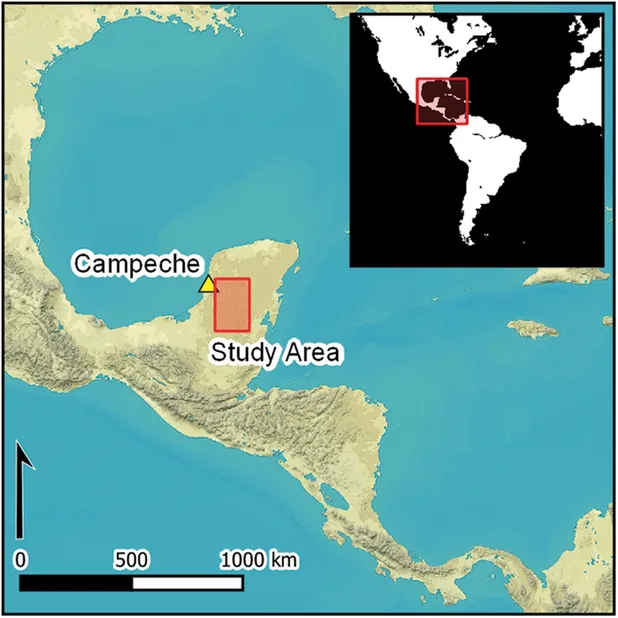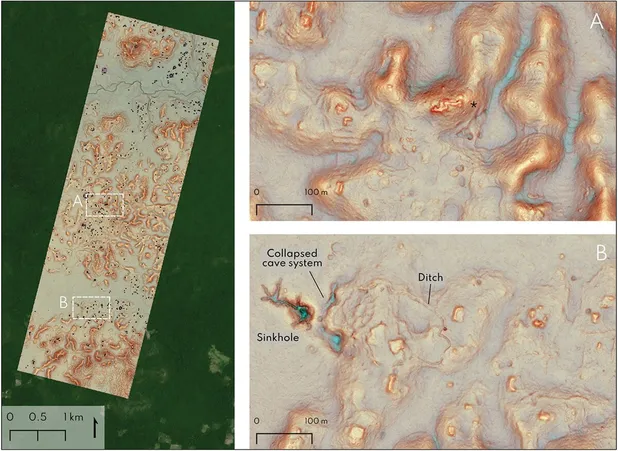
An incredible discovery has surfaced deep in the jungles of Campeche: a new Mayan city tentatively named Valeriana. Recently uncovered by researchers, this hidden city offers a rare glimpse into the ancient Mayan civilization, showcasing intricate structures, ceremonial sites, and a wealth of artifacts. This finding adds a new dimension to our understanding of Mayan culture and highlights the Mayan ruins in Campeche as an area rich in historical significance.
This discovery is not only a milestone for archaeologists but also a point of fascination for travelers eager to explore Mexico’s ancient past. Below, we delve into the details of this hidden Mayan city, its unique features, and what it means for the region and beyond.
The site of Valeriana was uncovered by a team of Mexican archaeologists who were conducting research in the dense forests of Campeche. The discovery was accidental, made possible by the use of advanced technology and fieldwork. The city, hidden under layers of jungle, is already sparking significant interest in both the archaeological community and the public.
According to researchers, the Campeche ruins of Valeriana consist of large ceremonial plazas, temples, and complex residential areas, indicative of a bustling and well-organized city that likely played a central role within the Mayan world. While excavations are still ongoing, early assessments suggest that Valeriana could provide essential insights into the lives, rituals, and culture of the ancient Mayans.
The city of Valeriana stands out due to its size and the preservation of its structures. Unlike other Mayan ruins, the remains at Valeriana indicate the presence of a large community with diverse functions, including ceremonial and possibly political activities. The architectural design and layout are both typical of Mayan cities, yet unique enough to suggest that Valeriana held a distinct role in the region.
Key Features of the Valeriana Site
Ceremonial Plazas: At the heart of Valeriana, researchers discovered expansive plazas that were likely used for gatherings, rituals, and community events. These plazas were essential to the social and religious life of the Mayans, and Valeriana’s layout highlights the importance of these spaces in fostering a strong communal identity.
Temples and Structures: The temples at Valeriana are among the most intriguing discoveries. These structures were carefully crafted with stone, using architectural techniques that were common in other famous Mayan sites like Chichen Itzá. The temples were likely dedicated to religious ceremonies and offerings, showcasing the intricate relationship between Mayan society and their gods.
Residential Areas: Unlike many Mayan ruins where residential areas are often eroded or less preserved, Valeriana’s residential spaces are well-maintained. This preservation allows archaeologists to gain a better understanding of the daily lives of the Mayan people who lived here, including their social structure, lifestyle, and interactions.

The discovery of Valeriana shines a spotlight on the broader significance of the Mayan ruins in Campeche. The state is already home to numerous archaeological sites, including Calakmul, a UNESCO World Heritage Site and one of the largest known Mayan cities. While Chichen Itzá and Tulum have often been the most popular sites for tourists, Campeche’s ruins offer a less-explored side of the Mayan civilization.
The layout and structure of Valeriana indicate that it may have been connected to other important Mayan sites in the region. Archaeologists believe that these cities were part of a vast network, with established trade routes and shared cultural practices that stretched across the Yucatán Peninsula. Valeriana’s proximity to other Campeche ruins further supports the theory that Campeche was a crucial region in the Mayan civilization’s expansion and influence.
This new Mayan city was uncovered largely due to the use of advanced technology. Archaeologists employed LiDAR (Light Detection and Ranging) technology, which uses laser pulses to create topographical maps, allowing researchers to see through dense jungle vegetation.
LiDAR has proven invaluable in revealing hidden Mayan sites across the Yucatán Peninsula, uncovering structures and layouts that would otherwise remain obscured. The discovery of Valeriana, in particular, highlights how LiDAR can unveil large-scale urban settlements without disturbing the natural landscape, paving the way for further discoveries in Campeche’s thick forests.
Valeriana’s discovery could be transformative for our understanding of the Mayan civilization, particularly in the less-explored areas of Campeche. Unlike famous sites like Chichen Itzá, Valeriana offers a more localized perspective on the development of Mayan culture. The city’s architectural style, ceremonial plazas, and temples suggest that it may have been a center for regional governance, trade, or religious practices.
Furthermore, Valeriana’s preservation enables archaeologists to analyze materials, tools, and possibly even remnants of organic matter that provide a clearer picture of Mayan life. This new Mayan city will likely contribute to our understanding of Mayan cultural practices, social hierarchy, and economic systems, offering valuable context for how the civilization developed in the region.
As news of the discovery spreads, it’s anticipated that the Campeche ruins of Valeriana could become a popular destination for both scholars and tourists interested in Mayan history. The state of Campeche, while rich in archaeological significance, has not seen the same level of tourism as neighboring areas like Yucatán or Quintana Roo. The discovery of Valeriana could open up new opportunities for sustainable tourism, bringing visitors to Campeche to explore its many hidden historical treasures.
Authorities in Campeche are already considering ways to protect and manage this new site. If properly preserved, Valeriana could serve as an educational destination, allowing visitors to experience the depth of Mayan culture without the overcrowding often seen at more popular sites.
The discovery of Valeriana as a new Mayan city hidden within Campeche’s forests is a thrilling development for archaeology and history enthusiasts alike. This find not only highlights the importance of Mayan ruins in Campeche but also emphasizes how much we still have to learn about the Mayan civilization’s reach and influence.
With modern technology making it possible to uncover hidden cities like Valeriana, we can expect that more ancient sites will be revealed in the years to come. Whether you’re an archaeology buff or simply intrigued by ancient cultures, Valeriana’s discovery marks an exciting moment in the ongoing exploration of Mayan history. As the world learns more about this site, Campeche may soon find itself as a must-visit destination alongside Chichen Itzá and other famous Mayan cities.